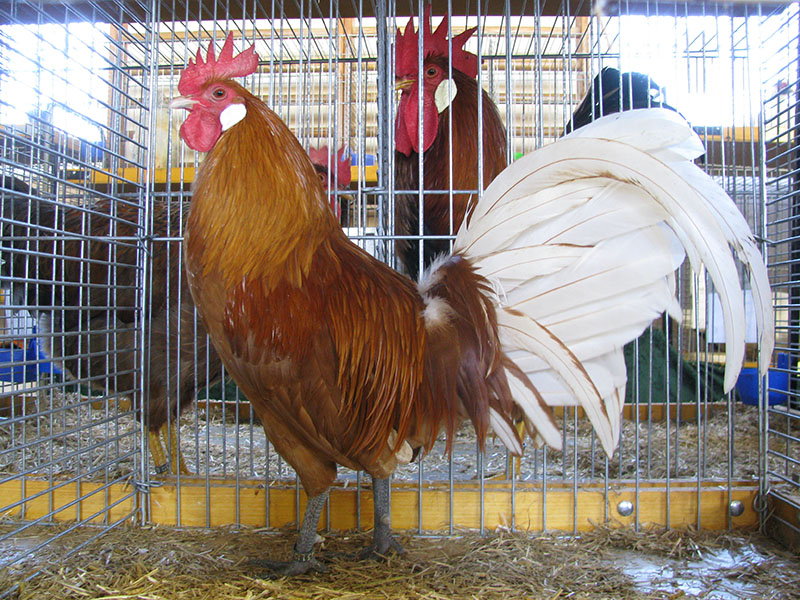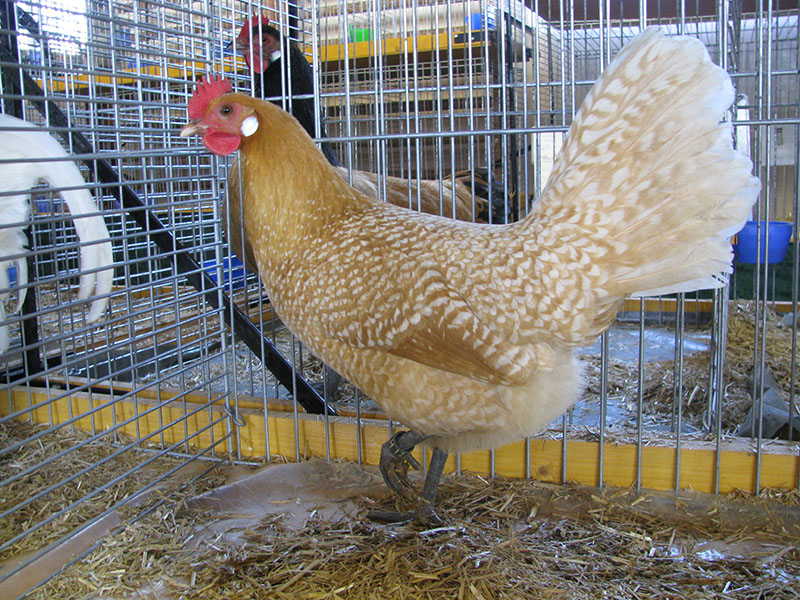Friesian Chicken
 Friesian fowls are one of the oldest of the Dutch breeds. Dutch authorities have claimed
that both the penciled Hamburgs, and in later years the Belgian Silver Campine arose
from the old Friesian fowl of Holland. According to archaeological evidence, the Friesian
has existed in the Netherlands for a long time, around 1,000 years. The Friesian was
the original Dutch "everyday layers," an appellation that has since been applied to
Hamburgs, Campines and Lakenvelders. Unquestionably all of these breeds trace back
to the old Friesian foundation. Breeds derived from the Friesian root are very quick
to feather and mature early.
Friesian fowls are one of the oldest of the Dutch breeds. Dutch authorities have claimed
that both the penciled Hamburgs, and in later years the Belgian Silver Campine arose
from the old Friesian fowl of Holland. According to archaeological evidence, the Friesian
has existed in the Netherlands for a long time, around 1,000 years. The Friesian was
the original Dutch "everyday layers," an appellation that has since been applied to
Hamburgs, Campines and Lakenvelders. Unquestionably all of these breeds trace back
to the old Friesian foundation. Breeds derived from the Friesian root are very quick
to feather and mature early.
Characteristics
The Friesian is a medium-sized fowl with close together feathering. The majority of
the Friesian fowls have  single combs with small red wattles and white earlobes. The shanks are pale lavender
or gray. The skin is a darker white almost gray color. The yellow penciled variety
is produced by crossing the Silver and Golden Penciled or White on Golden Penciled.
This cross produces a soft buff ground color in the female; and in the male the black
of the tail is affected by the cross, and the black of the Golden Penciled becomes
white in the Yellow Penciled. The ground color also comes of a lighter hue. The hens
are non-sitters.
single combs with small red wattles and white earlobes. The shanks are pale lavender
or gray. The skin is a darker white almost gray color. The yellow penciled variety
is produced by crossing the Silver and Golden Penciled or White on Golden Penciled.
This cross produces a soft buff ground color in the female; and in the male the black
of the tail is affected by the cross, and the black of the Golden Penciled becomes
white in the Yellow Penciled. The ground color also comes of a lighter hue. The hens
are non-sitters.
Standard Weights
Cocks: 5.5 lbs
Hens: 4.5 lbs
Varieties
- Silver Penciled
- Golden Penciled
- Yellow Penciled
- White
- Black
- Cuckoo
Egg Shell Color
White.
Uses
The Friesian is a good layer, but the eggs are inclined to run small; the birds are easily scared by strangers but are tame with those who tend them.
References
All Breeds of Poultry, Origin: History: Description, Mating and Characteristics, by Frank L. Platt. Published by AMERICAN POULTRY JOURNAL, Chicago, Illinois.
Lewis, Celia. "Breed Profiles: Friesian." The Illustrated Guide to Chickens: How to Choose Them, How to Keep Them. New York: Skyhorse Pub., 2011. 88-89. Print.
